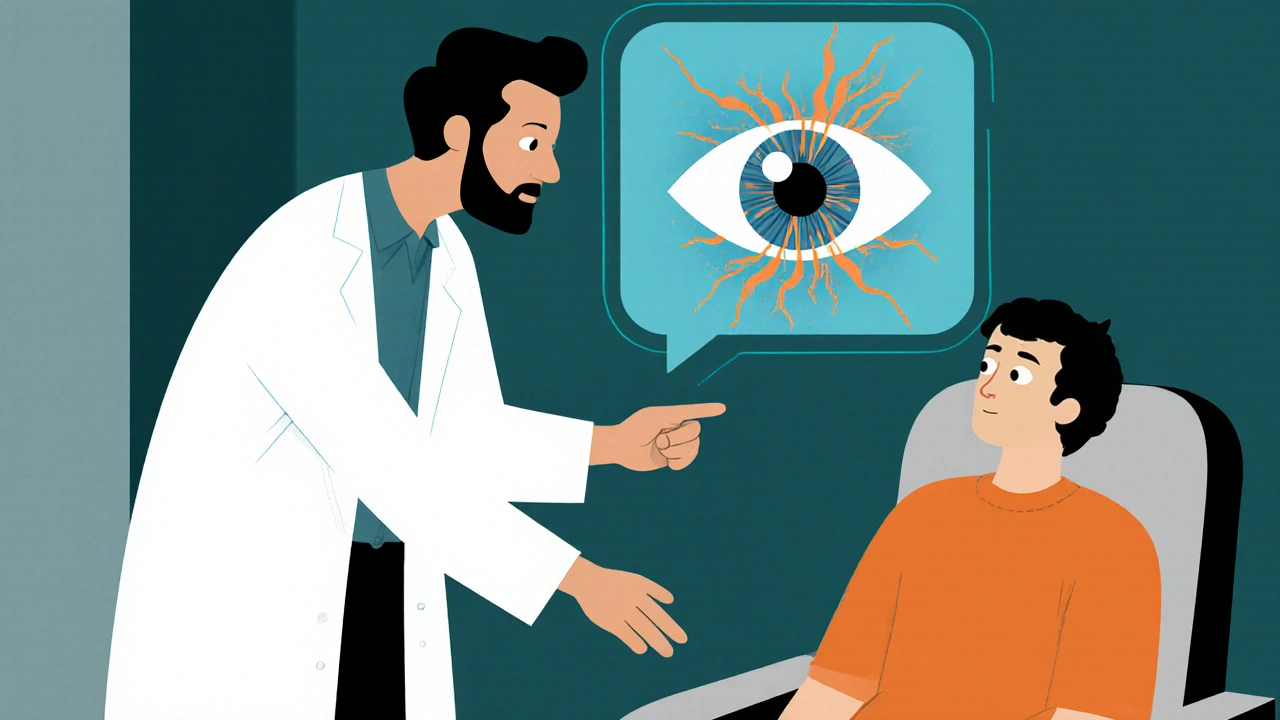Visual Field Test: What It Is and Why It Matters
When talking about visual field test, a quick, non‑invasive procedure that maps what you can see without moving your eyes. Also known as perimetry, it helps eye doctors spot blind spots, track eye disease and catch problems early.
One common form of this exam is perimetry, the systematic measurement of the visual field using light points and computer software. Perimetry can be static (fixed points) or kinetic (moving targets), and each style gives a slightly different picture of how your retina is working. The test is simple: you stare at a central dot while lights flash in the periphery, and you press a button whenever you see them.
Another key reason to get a visual field test is to monitor glaucoma, a group of eye diseases that damage the optic nerve, often linked to high eye pressure. Glaucoma silently steals peripheral vision, and without regular testing you might not notice the loss until it’s advanced. By comparing your results over time, doctors can decide whether medication or surgery is needed to slow the damage.
Medications can also play a hidden role in your sight. ocular toxicity, adverse effects of drugs that harm the eye’s structures is a concern with long‑term use of certain treatments such as tamoxifen, hydroxychloroquine, or even high‑dose steroids. These drugs may cause subtle changes in your visual field before you feel any symptoms, making the visual field test a valuable monitoring tool for anyone on chronic medication.
In the bigger picture, the visual field test is a part of a comprehensive eye exam, a routine check‑up that evaluates vision, eye health, and risk factors for disease. While an eye exam also includes visual acuity, eye pressure measurement, and retinal imaging, the visual field component adds the dimension of peripheral vision, giving a fuller view of eye health.
What to expect during the appointment? You’ll be seated in front of a dome‑shaped machine or a handheld screen. The technician will ask you to fixate on a central point and press a button each time a light appears. The whole process takes about 5–10 minutes, and you can usually continue normal activities right after. No needles, no drops—just a bit of focus and a button.
Interpreting the results can feel technical, but the basics are simple. The test produces a map with colored zones showing where vision is normal, reduced, or missing. Dark spots near the edges often point to glaucoma, while scattered defects might suggest medication‑related toxicity or retinal disease. Your eye doctor will compare the map to previous tests, pointing out any trends that need attention.
Below you’ll find a curated list of articles that dive deeper into related topics—whether you’re curious about how specific drugs affect vision, what lifestyle steps can protect your eyes, or the latest advances in glaucoma screening. Use these resources to prepare for your next appointment or simply broaden your understanding of eye health.

Glaucoma and Visual Field Testing: What to Expect
Learn what to expect during a glaucoma visual field test, why it matters, how it works, preparation tips, result interpretation, and next steps for managing your eye health.
